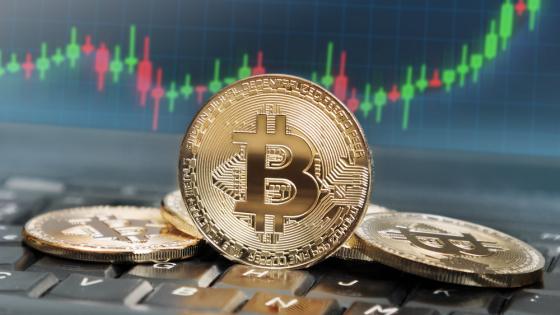In November 2021, the overall market capitalisation of cryptoassets surpassed $2.9 trillion. In August 2022, it was down to $1.2 trillion.
This dramatic fall partly tracked a general risk-off pattern driven by rising inflation, tighter monetary policy, and recession fears.
The rest was down to long-standing weaknesses of the sector, no longer concealed by inflows of fresh money.
Fraudulent practices, mismanagement of risk, and inadequate governance strategies precipitated the failure of largish projects and outfits, including the TerraUSD algorithmic stablecoin
(Landau 2022, d’Avernas et al. 2022), centralised crypto lender Celsius, and crypto investment fund Three Arrows Capital. As trust in the ecosystem waned, major tokens such as bitcoin and ether shed more than half their value. While the worst part of the contagion appears to be over,
asset prices have not recovered and investment in the space is slowing down.
So, is this the end of crypto, as prophesised many times before?
It does not need to be, provided that regulators and the industry find a way to work together (Biancotti 2022).
A chance to rebuild in an orderly environment…
The washout of bad actors and the bursting of financial bubbles affords the crypto industry an opportunity to focus on amending its mistakes and building better technology, without distractions from overblown yields. This is the time for self-discipline and a sharper focus on security, decentralisation (Aramonte et al. 2021), and scalability. Many interesting experiments are already underway. The most striking example is perhaps that of so-called Layer 2s, infrastructural scaling solutions that improve the speed and reduce the cost of blockchain-based transactions (Ethereum.org 2022). Other rapid-growth areas range from research on privacy preserving cryptographic proofs of identity (Ante et al. 2022) to consumer products such as non-fungible tokens (NFTs) in the arts and entertainment markets.
At the same time, the crypto ecosystem is finally going to be regulated in a comprehensive way in many jurisdictions, with international institutions such as the Financial Stability Board providing a forum for coordination (FSB 2022). The EU is at the most advanced stage, with the Markets in Crypto Asset Regulation (MiCAR) expected to come into force within the year (European Commission 2020).
In the US, a presidential Executive Order in May 2022 mandated several agencies to explore a number of regulatory issues and report back within six months (the White House 2022). The UK announced in April that a regulatory package was coming, part of an effort to make the country a hub for the industry (Her Majesty’s Treasury of the United Kingdom 2022). Other countries, such as Japan, Canada, Australia, and South Korea, are deploying crypto laws in a similar spirit.
Innovation and legal certainty may be the twin foundations upon which crypto flourishes. To achieve the goals envisioned by its advocates – enhanced cyber security across the digital world, effective protection of property rights, product and process innovation in finance and other sectors, rebalancing of power between providers and users of digital services with the so-called Web3 model, creation of opportunities for disadvantaged groups, and more – an important and challenging condition must be met. Regulators and the industry need to cooperate constructively and creatively, so that laws are not outpaced by technology or circumvented by players in bad faith. This is not going to be easy; at least, not all the time.
…but can we set our differences aside?
There are several potential roadblocks in the dialogue between regulators and the private sector. Assets traded in traditional financial markets represent claims on definite entities, and/or embed certain legal rights. This is not always the case in crypto markets, which may create a problem of regulatory perimeter. A part of crypto’s value proposition remains tied to systems that allow for participant anonymity while providing censorship resistance, i.e. the technical impossibility of blocking any transaction on a permissionless blockchain. Crypto developers generally prefer a higher degree of decentralisation and automation to a lower degree. Some even see the lack of rules as a gateway to financial inclusion and social mobility. These traits do not sit well with formal legal frameworks.
A degree of compromise can be reached on many facets of these issues, especially if regulatory sandboxes and innovation hubs are leveraged to their full potential. In those protected spaces, already active in many jurisdictions, authorities and the industry can learn each other’s language, and conjure solutions that preserve the rule of law without drastic departures from the crypto ethos. For example, decentralisation does not necessarily mean lack of legal accountability. While some crypto actors are keen on ‘non-governance’ – the complete and immutable automation of protocols – in real life most decentralised projects are ultimately governed by someone, such as the members of a decentralised autonomous organisation (DAO). Legislating DAOs and similar arrangements may be the key to balancing relevant interests in this domain.
This would also provide more clarity on the legal claims embedded in some tokens.
Anonymity raises thornier issues, yet solutions can still be found if both sides are willing to cede some ground. For example, regulators could encourage the use of identification technologies that reduce information leaks to a minimum. Such technologies would allow for the anonymity of interested parties vis-à-vis anyone but authorities – no need to provide personal information to exchanges or any other company. Other solutions could build on suggestions from the industry, such as the recent proposal of soulbound tokens (Weyl et al. 2022), or non-transferable NFTs that contain verifiable information about a single individual.
Censorship resistance is the toughest problem to crack. It is an essential correlate of trustlessness, one of the key aims of crypto at the time of its inception. Bitcoin was originally born to enable secure transactions between peers, without any need to rely on a trusted intermediary. Transaction integrity was to be guaranteed by a transparent algorithm alone, so that any abuse could be ruled out. Enabling any third entity to interfere with transactions deeply undermines this concept. On the other hand, full-fledged censorship resistance prevents nation states from controlling access to financial infrastructure for domestic and external power projection, an essential prerogative even in the most liberal of jurisdictions (Baldwin 2020).
This issue is increasingly in the public eye. In the Summer of 2022, the US Office of Foreign Assets Control (OFAC) placed sanctions on a set of smart contracts that diminish the traceability of some cryptoassets. North Korean hackers and other criminals had used the contracts to launder illicit funds (US Department of the Treasury 2022). This was an unprecedented move, as sanctions are generally directed at named individuals or companies, not at autonomous code. The sanctions are a very powerful instrument, exposing anyone who interacts with the code to the risk of decades-long imprisonment. OFAC’s decision opened a fierce debate that carries echoes of the encryption wars fought in US courts in the 1990s.
There is a dearth of soft options to address the downsides of censorship resistance. Regulators could upload their own smart contracts to popular blockchains, aimed at tracking suspicious operations, but this approach is not equivalent to being able to block a transaction. It is a choice that preserves the integrity of the ecosystem, at the cost of slow, ex post trudges through blockchain forensics labs and the courts in case anything untoward is found.
One alternative would demand that developers embed certain controls in protocols, when the chain is at the still-centralised nascent stage, the way some addresses are already blacklisted on a voluntary basis by many protocol founders. When and if the chain becomes entirely decentralised, the updating of controls would have to be done directly by authorities, but the actions allowed to them could be constrained from the beginning in a transparent way to prevent abuse.
This would allow for faster enforcement of regulation, but would be profoundly at odds with crypto values.
References
d’Avernas, A, V Maurin and Q Vandeweyer (2022), “Can Stablecoins Be Stable?”, Swedish House of Finance Working Paper.
Ante, L, C Fischer and E Strehle (2022), “A bibliometric review of research on digital identity: Research streams, influential works and future research paths”, Journal of Manufacturing Systems 62: 523–538.
Abelson, H, R Anderson, S M Bellovin, J Benaloh, M Blaze, W Diffie, J Gilmore, M Green, S Landau, P G Neumann, R L Rivest, J I Schiller, B Schneier, M A Specter and D J Weitzner (2015), Keys Under Doormat: Mandating Insecurity by Requiring Government Access to All Data and Communications, MIT Press.
Aramonte, S, W Huang and A Schrimf (2021), “DeFi Risks and the Decentralization Illusion”, BIS Quarterly Review, December.
Baldwin, D A (2020), Economic Statecraft: New Edition, Princeton University Press.
Biancotti, C (2022), “What’s Next for Crypto?”, Bank of Italy Occasional Papers, forthcoming.
Didisheim, A, S Kassibrakis and L Somoza (2022), “The End of the Crypto Diversification Myth”, VoxEU.org, 21 July.
Ethereum.org (2022), Ethereum for Everyone – Scaling Ethereum without Compromising on Security or Decentralization.
European Commission (2020), Digital Finance Package.
Financial Stability Board (2022), FSB Statement on International Regulation and Supervision of Crypto-Asset Activities, 11 July.
Her Majesty’s Treasury of the United Kingdom (2022), “Government sets out plan to make UK a global cryptoasset technology hub”, 4 April.
Landau, J P (2022), “Crypto Currencies and Digital Money: Tacking Stock”, VoxEU.org, 27 June.
OECD (2022), “Institutionalisation of Crypto-Assets and DeFi-TradFi interconnectedness”, OECD Business and Finance Policy Papers, 19 May.
The White House (2022), “Executive Order on Ensuring the Responsible Development of Digital Assets”, 06 March.
United States Department of the Treasury (2022), “U.S. Treasury Sanctions Notorious Virtual Currency Mixer Tornado Cash”, 08 August.
Weyl, E G, P Ohlhaver and V Buterin (2022), “Decentralized Society: Finding Web3’s Soul”, SSRN, 11 May.



